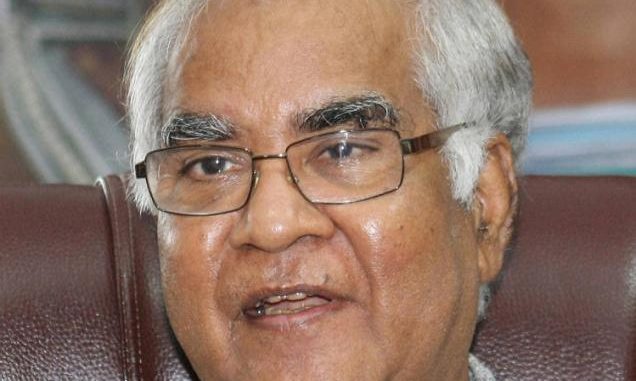
Recommendations of the “International Council of Academies of Engineering and Technological Sciences” (CAETS-2015) summit on-“ Pathways to sustainability for Energy, Mobility and Healthcare Engineering”, held from 13th to 15th of this month, are ready to be submitted to respective governments. The 3-day technical deliberations of eminent international experts in Energy, Mobility and Healthcare Engineering from Belgium, Canada, China, France, Germany, Hungary, India, Japan, Netherlands, South Africa, Spain, Sweden, Switzerland, UK, USA, Uruguay etc were summarised by CAETS CONVOCATION-2015”, to frame these recommendations. In India they will be submitted by the Indian National Academy of Engineering (INAE) to the Government.
Achieving long term sustainability, under business as usual mode, is a major technological challenge in energy, mobility and health care sectors.
RECOMMENDATIONS ARE:
ENERGY
Energy resources’ sustainability and their cost efficiencies will dictate shift to lower carbon non-fossil energy systems.
Global energy consumption will grow from 524 to 820 quadrillion BTU between 2010 and 2040 leading to GHG emission increase by more than 40% from the present level under business as usual scenario. Since the dynamics of energy growth is driven by the population and wealth enhancements, it is important to keep track of these growth dynamics in different countries.
The transition to lower carbon regime require a careful assessment of current energy and emission loads at national level for setting energy/emission reduction targets and timelines.
Developing application-based energy scenarios is essential for devising future energy efficient systems. A typical example is the highly interconnected electricity, transport and heating sectors. The coal based energy continues to attract engineers to develop cleaner process options and minimize GHG emissions keeping in mind the transitional priorities. The actions include up gradation of beneficiation, ultra supercritical combustion and integrated gas combined cycle concept for gasification, co-firing of coal and biomass etc,. For next generation solar cell energy materials beyond silicon, conjugate organics, inorganic quantum dots and mixed semiconductor oxides/peroxides need to be adapted.
Similar challenges are foreseen in high energy density battery and membrane materials for fuel cells. Light based technologies can play a major part in developing future energy efficient systems. There is a need to integrate photonic and bio photonic technologies.
The expert panel, which deliberated on these issues, stressed the need to develop high strength light-weight materials including nano composites and nano structured steels, electrochemical and catalytic options for hydrogen generation, which are adaptable for building and transportation sectors.
MOBILITY
The future engineering challenges lie in the development of semi and fully automated transport vehicles, intelligent driver-vehicle interface and innovative multi-axle hydraulic trailers for heavy loads.
The fast changing digital technology has opened up new avenues for electrifications of rail, air and marine transport vehicles. The five digital forces, viz., cloud computing, mobile technologies, social networks, big data and robotics will make high impact on these developments.
Exciting developments are taking place in bridge design and construction technologies with urban and rural transport restructuring, virtual mobility and carbon foot print minimisation during their construction as defining factors. Novel retrofit technologies are needed for their restoration. A life cycle approach embracing bridge design, construction, maintenance, restoration and dismantling is a future priority area for civil engineers.
The recent developments in rapid urban rail transportation systems in China, India and Japan have demonstrated the new engineering skills acquired in the planning, design and execution of underground tunnels and structures. From material engineering point of view, material recycle and functionalized material applications are high priority areas in evolving sustainable roadways.
The dilemmas in mass transportation in emerging economies are many. It is important to consider seamless connectivity, smart mobility, enforcement of advanced safety measures, equitable allocations of road space for multiple type of vehicles and time variant traffic demands.
HEALTH CARE
Multitude of engineering challenges await healthcare sector in terms of new diagnostic tools, next generation medical devices and application of informatics and analytics.
The recent advances in nano and point of care diagnostic, scalable medical and remote neonatal monitoring systems have enhanced the chances of early and accessible diagnosis. Structural process concept has greatly helped in developing ground breaking technologies for these systems in advanced nations with the help of multi-disciplinary teams comprising engineers, product designers, business analysts and clinicians.
The concept of Regenerative Engineering which combines tissue engineering, material science, cell physics and developmental biology has enabled the technologies for next generation medical devices. Ground breaking bionic ear and eye technologies have enabled notable progress against hearing and visual impairments. The recent advances in sensors, telecommunication, mobility engineering will play a major role in evolving next generation device technologies for both communicable and non-communicable diseases. Sensing and data analytic skills provide new transformational material opportunities in intensive health care. Advanced computer aided tools based on big data analytics are needed for biologically meaningful insights into the enormous volume of micro biome data generated from sequencing platforms.
A panel of experts examined the issue of convergence of engineering and health care sciences. They are certain that the convergence is occurring impressively due to application of ICT and big analytics in healthcare systems. Several key issues including affordability of well-engineered systems in rural and urban environments and engineers role in new drug discovery came up for discussion.
Minister of Science and Technology Dr Harsh Vardhan, inaugurating the convocation last week, urged the global scientific community to suggest robust strategy for ensuring sustainability in these vital sectors. The Minister also formally launched the electronic version of the CAETS report on “Transitioning to Lower Carbon Economy: Technological and Engineering Considerations for Building and Transportation Sectors”.
The Secretary, Department of Science and Technology, Government of India Prof Ashutosh Sharma, highlighted the importance of the selected themes to developing nations.
The eminent nuclear scientist Dr.Baldev Raj is the first Indian to head the premier global Body CAETS, and the CONVOCATION-2015 is credited with the unique distinction of convergence of such reputed international domain specialists for the first time in India.







Leave a Reply
You must be logged in to post a comment.